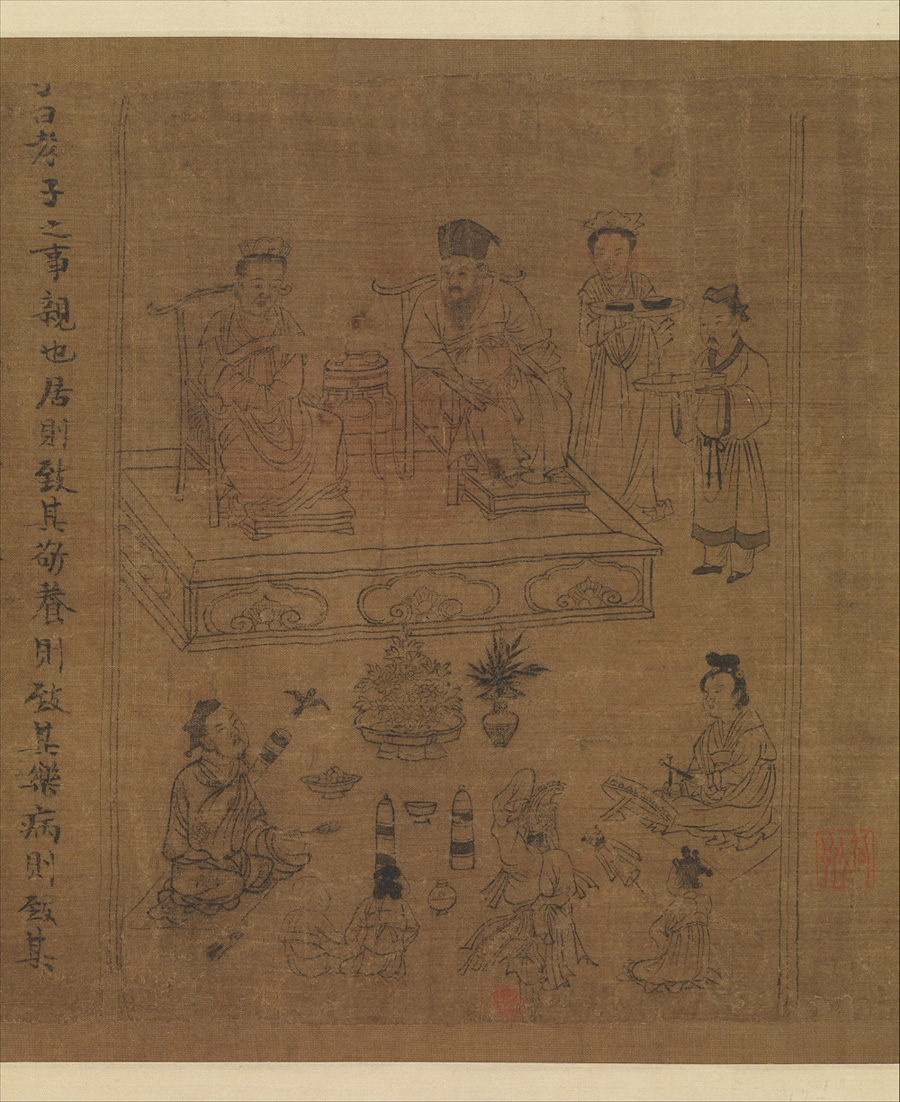Home >> Arts >> Painting >> Li Gonglin >> The Classic of Filial Piety
The Classic of Filial Piety (孝經圖)
Li Gonglin (李公麟, 1049-1106), Song Dynasty (960-1279)
Part of a handscroll, ink on silk, 21.9 x 475.6 cm, The Metropolitan Museum of Art, New York
Song scholar-artists believed that painting was not just a record of sensory experience but also a reflection of the artist's mind, a revelation of his personality, and an expression of deeply held values. In giving form to this ideal, Li Gonglin fundamentally transformed Chinese art. Prior to Li's time, painting served a public function: it was primarily decorative or didactic in intent. With Li, painting joined music, poetry, and calligraphy as a medium of self-expression. Li's revolutionary new style established the three essential desiderata of scholar-painting: moral purpose, learned stylistic references to the past, and expressive calligraphic brushwork.
The Classic of Filial Piety (孝經), composed between 350 and 200 B.C., teaches a simple but all-embracing lesson: beginning humbly at home, filial piety not only ensures success in a man's life but also brings peace and harmony to the world at large. During the Song dynasty, the text became one of the thirteen classics of the Neo-Confucian canon and remained a cornerstone of traditional Chinese moral teaching until modern times.
Purposefully restrained and without the decorative appeal of color, Li's paintings alternate with his transcriptions of brief chapters from the Classic. The images do more than illustrate the text; using his art to criticize, exhort, and subvert, Li presents subtle commentaries on the Classic's moral relevance to the Song world. Like the paintings, the calligraphy is executed in an archaic style instantly recognizable to the connoisseur as a sophisticated plea for a return to simple virtues and plain-living rectitude.
